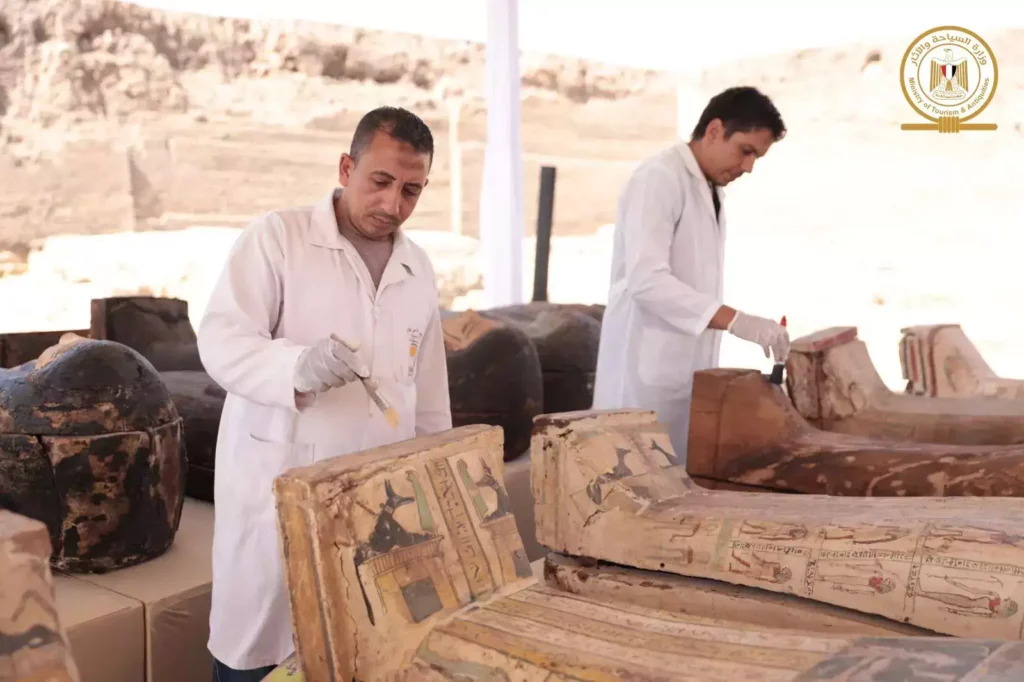Archaeologists uncover coffins that have been shut for 2,500 years; it’s Saqqara again
In 2020, archaeologists in Egypt unsealed a mummy coffin sealed 2,500 years ago in front of a live audience in Egypt. The mummy was wrapped in an ornate burial cloth, which had been decorated to resemble a deceased priest’s face.

Greg Lewis, New Zealand’s ambassador to Egypt, also shared a video of unsealing the mummy coffin on Twitter.
According to a press release by Egypt’s Ministry of Tourism and Antiquities, initially, three burial wells at different depths between 10 and 12 metres, with 13 coffins, were discovered in Saqqara.
Earlier in 2020, Archaeologists found 59 sealed wooden sarcophagi in the necropolis of Saqqara, south of Cairo near Memphis.
Saqqara is home to several pyramids, including the famous Giza Pyramids. It was designated as a UNESCO World Heritage Site in the 1970s.
Recently, another team of archaeologists in Saqqara uncovered a new trove of coffins that are believed to have been left untouched for 2,500 years.

The team found hundreds of statues of ancient Egyptian gods — Anubis, Amun, Min, Osiris, Isis, Nefertum, Bastet, and Hathor. Besides the statues, the diggers also unearthed 250 ancient sarcophagi.
Egypt’s Ministry of Tourism and Antiquities said in a statement that 250 coffins, 150 bronze statues, and other objects dating back to about 500 BC were found in Saqqara.
“The mission of the Supreme Council of Antiquities succeeded in discovering the first and largest cache of 150 bronze statues from the late period in the cemetery of the sacred animals in Saqqara, as well as burial wells containing 250 closed coloured wooden coffins containing mummies, which will be displayed in the Grand Egyptian Museum,” Egypt’s Ministry of Tourism and Antiquities said in an online statement.
Photos of the incredible finds have been shared on Facebook by the Ministry of Tourism and Antiquities.
Reports said the coffins were found in remarkably good condition in burial shafts. They contained mummies, amulets and smaller wooden boxes.
They will not be taken to the Grand Egyptian Museum, which is currently under construction near the Great Pyramids of Giza.
“We also found a statue of Imhotep … and we hope we can find his tomb soon,” Head of Egypt’s Supreme Council of Antiquities, Mostafa El-Waziri, told ABC News.
Imhotep was an Egyptian chancellor to the Pharaoh Djoser, possible architect of Djoser’s step pyramid, and high priest of the sun god Ra at Heliopolis. Very little is known of Imhotep as a historical figure.





